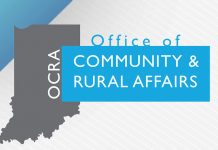By John Krull
TheStatehouseFile.comÂ
LITTLETON, Colorado – The words carved into the stone of the wall at the Columbine Memorial say so much:
“It brought the nation to its knees, but now that we’ve gotten back up how have thing changed; what have we learned?â€
I’m at the memorial early in the morning, before the workday has begun.
Set in a circle with the words of the survivors set in stone and the stories of the fallen in bronze, the memorial is in a lovely spot, upon a small rise, tucked between a park, the school’s athletic fields and the school building where horror once stalked. Mountains loom in the distance. The fresh morning sun makes the earth tones of the memorial’s brick and bronze almost glow.
It has been almost 20 years since two troubled students armed with an arsenal opened fire in the cafeteria, library, hallways, and classrooms of Columbine High School on April 20, 1999. They murdered 13 people and injured 24 others before they killed themselves.
Columbine shocked the nation, in part because the school and the community seemed so ordinary.
“I don’t think our school was any different than any other high school in America,†one student remembrance set in the wall says.
That’s why it hit so hard.
If something like this could happen at Columbine High School, it could happen anywhere.
And it has.
In Newtown, Connecticut.
Parkland, Florida.
Santa Fe, Texas.
Noblesville, Indiana.
To name just a few.
Through meticulous reporting, The Washington Post has documented that more than 215,000 American students have experienced a school shooting since Columbine. Nearly a quarter-million young people have experienced what the students at Columbine did. They’ve known the terror of fearing for their lives and, in all too many cases, they’ve learned to grieve for friends and classmates who have fallen.
“A kid my age isn’t supposed to go to that many funerals,†says another student statement embedded in the wall.
As I move through the memorial, two women walk by on a nearby trail. A couple of bike riders stop at the memorial’s entrance to take sips of water. From the athletic fields a few hundred yards away, I can hear young people shouting encouragement and instruction to each other.
Life goes on.
But for the 13 people whose stories are told here in bronze, life didn’t.
It stopped.
The remembrances cast in metal by parents and other family members are wrenching. In some, the anger at the injustice of a child’s death still seethes. In others, the grief has settled into something as lasting as the rock that makes up the memorial.
This hurt won’t go away.
The most moving parts of the remembrances are the simple glimpses of young people discovering themselves, discovering the world around them, finding their place in this life. They were kids, sometimes confused, sometimes assured, but on their way.
If they’d lived, they’d be in their 30s now, many of them likely married with children of their own.
But they didn’t live.
Their stories stopped with a bullet.
We have had many national conversations about tragedies such as Columbine in the days and years since those two troubled students brought hell to an ordinary high school.
Something, though, always stops the discussion.
It’s easy and perhaps comforting to blame the National Rifle Association, the gun lobby and a corrupt political system for preventing us from moving forward, for trapping us in tragedy after tragedy after tragedy.
But the reality is that we could force the conversation, we could make our schools and our streets safer for our young people if we pushed and worked hard enough.
But we haven’t.
“What have we learned?†the words on the wall ask.
As I walk from the memorial back to my car, I pass the members of the Columbine High School cheerleading squad on their way back from early morning practice in the athletic fields nearby.
As they walk by the entrance to the memorial, they don’t glance over. They don’t stop their quiet chatter.
None of these students was alive when the gunshots rang out in the school they attend.
For them, that tragedy is history, a piece of the landscape they walk by every day.
Just another part of the world we have made.
FOOTNOTE: John Krull is director of Franklin College’s Pulliam School of Journalism, host of “No Limits†WFYI 90.1 Indianapolis and publisher of TheStatehouseFile.com, a news website powered by Franklin College journalism students.
This article was posted by the City-County Observer without opinion, bias or editing.





